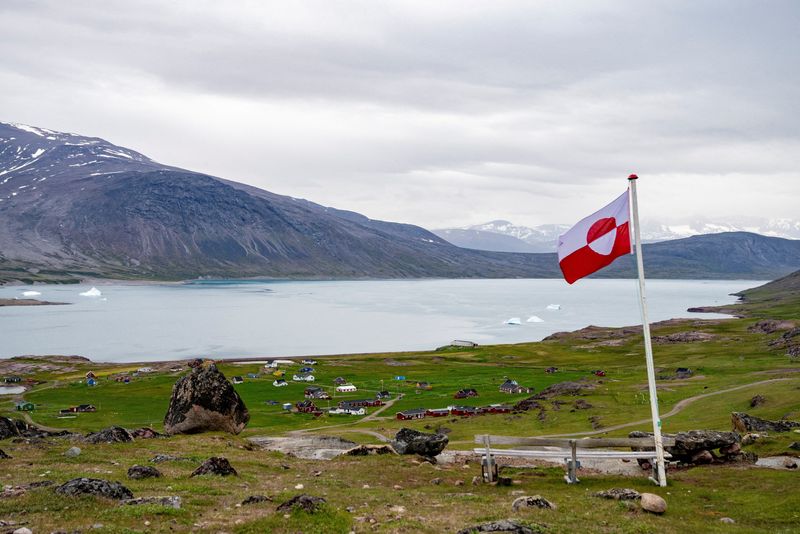(Reuters) – U.S. President-elect Donald Trump last week reiterated his interest in taking control of Greenland, a semi-autonomous territory of Denmark, which could be useful for the U.S. because of its strategic location and rich mineral resources.
A 2023 survey showed that 25 of 34 minerals deemed “critical raw materials” by the European Commission were found in Greenland.
The extraction of oil and natural gas is banned in Greenland for environmental reasons, and development of its mining sector has been snarled in red tape and opposition from indigenous people.
Below are details of Greenland’s main mineral deposits, based on data from Greenland’s Mineral Resources Authority:
RARE EARTHS
Three of Greenland’s biggest deposits are located in the southern Gardar province.
Companies seeking to develop rare earth mines are Critical Metals Corp, which bought the Tanbreez deposit, Energy Transition Minerals, whose Kuannersuit project is stalled amid legal disputes, and Neo Performance Materials.
Rare earth elements are key for permanent magnets used in electric vehicles (EV) and wind turbines.
GRAPHITE
Occurrences of graphite and graphite schist are reported from many localities on the island.
GreenRoc has applied for an exploitation license to develop the Amitsoq graphite project.
Natural graphite is mostly used in EV batteries and steelmaking.
COPPER
According to the Mineral Resources Authority, most copper deposits have seen only limited exploration campaigns.
Especially interesting are the underexplored areas in the north-east and central-east of the island, it said.
London-listed 80 Mile is seeking to develop the Disko-Nuussuaq deposit, which has copper, nickel, platinum and cobalt.
NICKEL
Traces of nickel accumulations are numerous, according to the Mineral Resources Authority.
Major miner Anglo American (JO:AGLJ), was granted a five-year exploration licences in western Greenland in mid-2019 and has been looking for nickel deposits, among others.
ZINC
Zinc is mostly found in the north in a geologic formation that stretches more than 2,500 km.
Companies have sought to develop the Citronen Fjord zinc and lead project, which had been billed as one of the world’s largest undeveloped zinc resources.
GOLD
The most prospective areas for gold potential are around the Sermiligaarsuk fjord in the country’s south.
Amaroq Minerals launched a gold mine last year in Mt Nalunaq in the Kujalleq Municipality.
DIAMONDS
While most small diamonds and the largest stones are found in the in the island’s west, their presence in other regions may also be significant.
IRON ORE
Deposits are located at Isua in southern West Greenland, at Itilliarsuk in central West Greenland, and in North West Greenland along the Lauge Koch Kyst.
TITANIUM-VANADIUM
Known deposits of titanium and vanadium are in the south-west, the east, and south.
Titanium is used for commercial, medical and industrial purposes, while vanadium is mainly used to produce specialty steel alloys. The most important industrial vanadium compound, vanadium pentoxide, is used as a catalyst for the production of sulfuric acid.
TUNGSTEN
Used for several industrial applications, tungsten is mostly found in the central east and north-east of the country, with assessed deposits in the south and west.
URANIUM
In 2021, the left-wing Inuit Ataqatigiit party banned uranium mining, effectively halting development of the Kuannersuit rare earths project, which has uranium as a byproduct.
($1 = 7.2705 Danish crowns)
